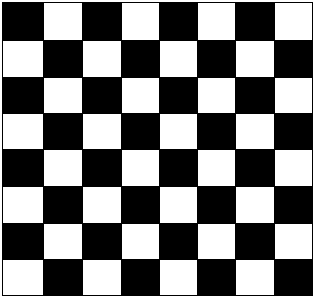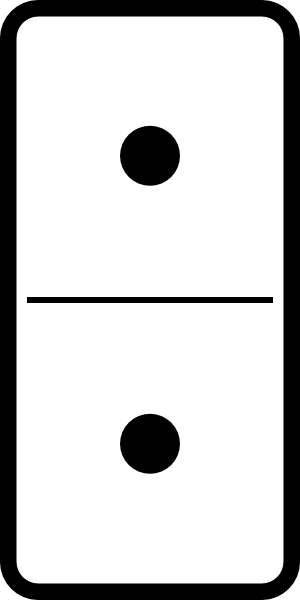What is it that mathematicians really do? They prove theorems, it’s true – but that’s just the end result. Along the way comes the fun part – playing around with a problem, trying to see if you can understand the rules of the game, and find some kind of pattern that “makes the whole thing make sense”. Over the next few weeks, you will be working individually and in groups on a puzzle or game. Of all the things you do in this class, this work will be most similar to the work that real mathematicians do.
OpenLab #6: Due this Thursday 10/16
Read through the descriptions of the three puzzles below. Then respond to this comment, ranking them in order of preference. That’s all you have to do.
For example, you might respond like this:
First choice: Mutilated Checkerboards
Second choice: Bridges and Walking Tours
Third choice: MIU Game
NOTE: This project is about the process of playing around with a problem when you do not know what the answer is (or even what the problem is, really). BUT all of these puzzles are well-documented on the internet. I request that you do not Google them, or look at any other resources related to them, until this project is over.
RULES:
- Read the puzzle descriptions below. Do NOT Google these topics for more information.
- If you are already familiar with one of these puzzles, pick another one as your first choice.
- Puzzles will be assigned next week, with more information and specific instructions.
- You do NOT need to solve these puzzles for now.
The Puzzles
Puzzle 1: The MIU Game
We are going to play a game with strings of symbols. This game was invented by a man named Douglas Hofstadter and found in his book Gödel, Escher, Bach. Here are the rules:
Suppose there are the symbols ‘M’, ‘I’, and ‘U’, which can be combined to produce strings of symbols called “words”, like MUI or MIUUU. In the MIU game, we always start with the “axiomatic” word MI, and transform it using the following four rules, to obtain some “goal” word. The rules state that you may:
- Add a U to the end of any string ending in I. For example: MI to MIU, or MUUII to MUUIIU.
- Double any string after the M (that is, change Mx, to Mxx, where ‘x’ represents any string of symbols). For example: MIU to MIUIU
- Replace any III with a U. For example: MUIIIU to MUUU
- Remove any UU. For example: MUUU to MU
EXAMPLE 1
Goal Word: MIIU
Solution:
Start with MI (axiomatic word)
MI to MII (rule 1)
MII to MIIU (rule 2)
EXAMPLE 2
Goal Word: MIIIIIIU
Puzzle 2: Mutilated Checkerboards
We are going to play a game with checkerboards and dominos. So that we all have the same picture in our heads, a checkerboard is an 8×8 grid of squares (64 squares total), colored alternatingly black and white:

A domino is a 1×2 block, which is exactly the size of two squares on the checkerboard (the dots on the domino do not mean anything in this game):

Your goal is to cover the checkerboard with dominos, according to the following rules:
- You can use as many dominos as you wish.
- Dominos can be arranged horizontally or vertically, as long as each domino covers exactly two squares on the checkerboard.
- Dominos cannot overlap each other, and cannot extend off the edge of the board.
EXAMPLE 1: Can you cover the checkerboard with dominos?
EXAMPLE 2: What if we remove one of the corner squares from the checkerboard (a “mutilated checkerboard”) – now can you cover it with dominos?
Puzzle 3: Bridges and Walking Tours
We are going to play a game creating walking tours of cities with bridges. We begin in the city of King’s Mountain, which is built on four land masses – both shores of a river and two islands in midstream – connected by a total of seven bridges (shown in green).

EXAMPLE 1: Can you create a walking tour of the city that crosses every bridge exactly once? You can begin anywhere you like, and end anywhere you like, as long as you cross each bridge just once.




